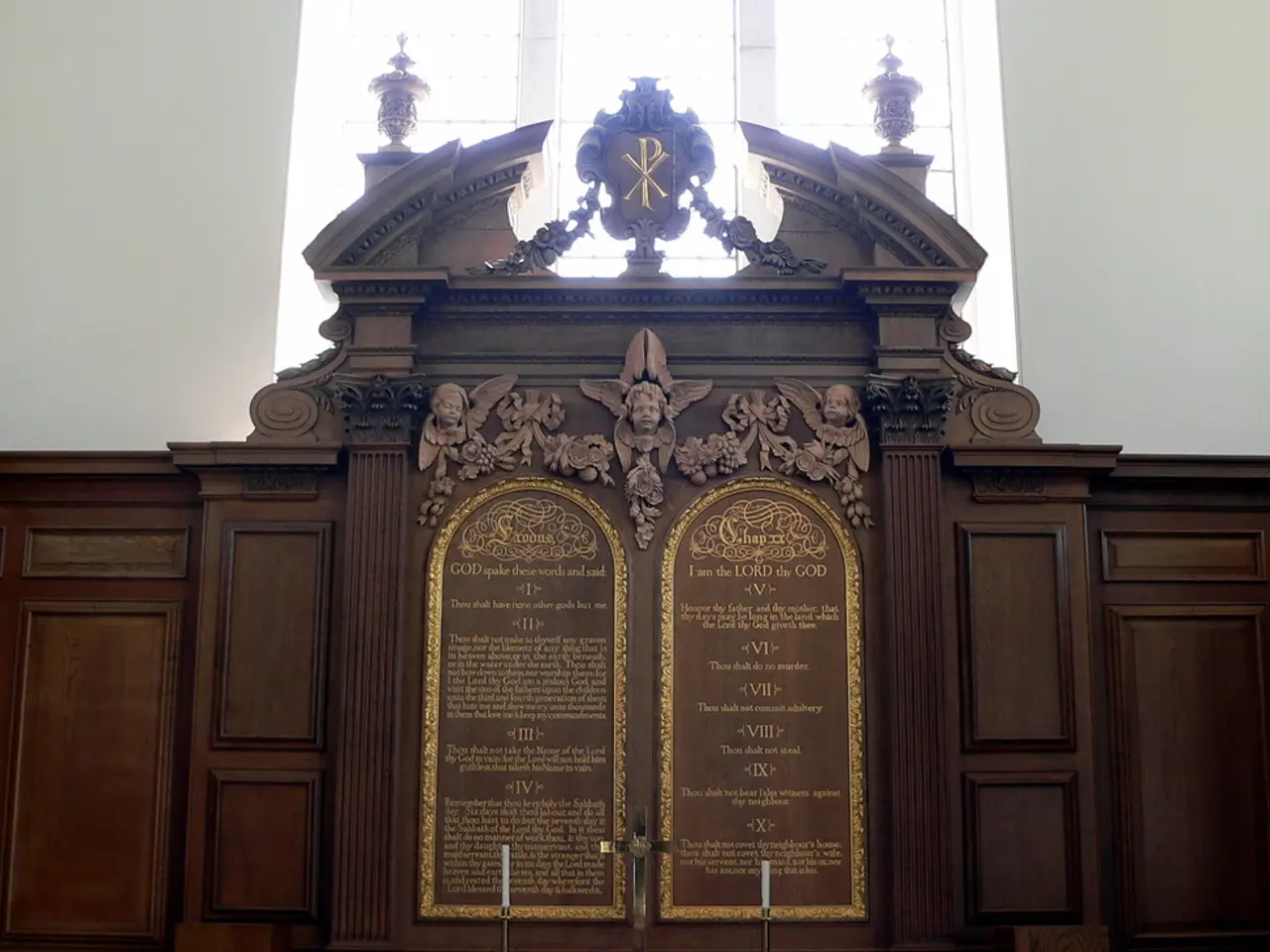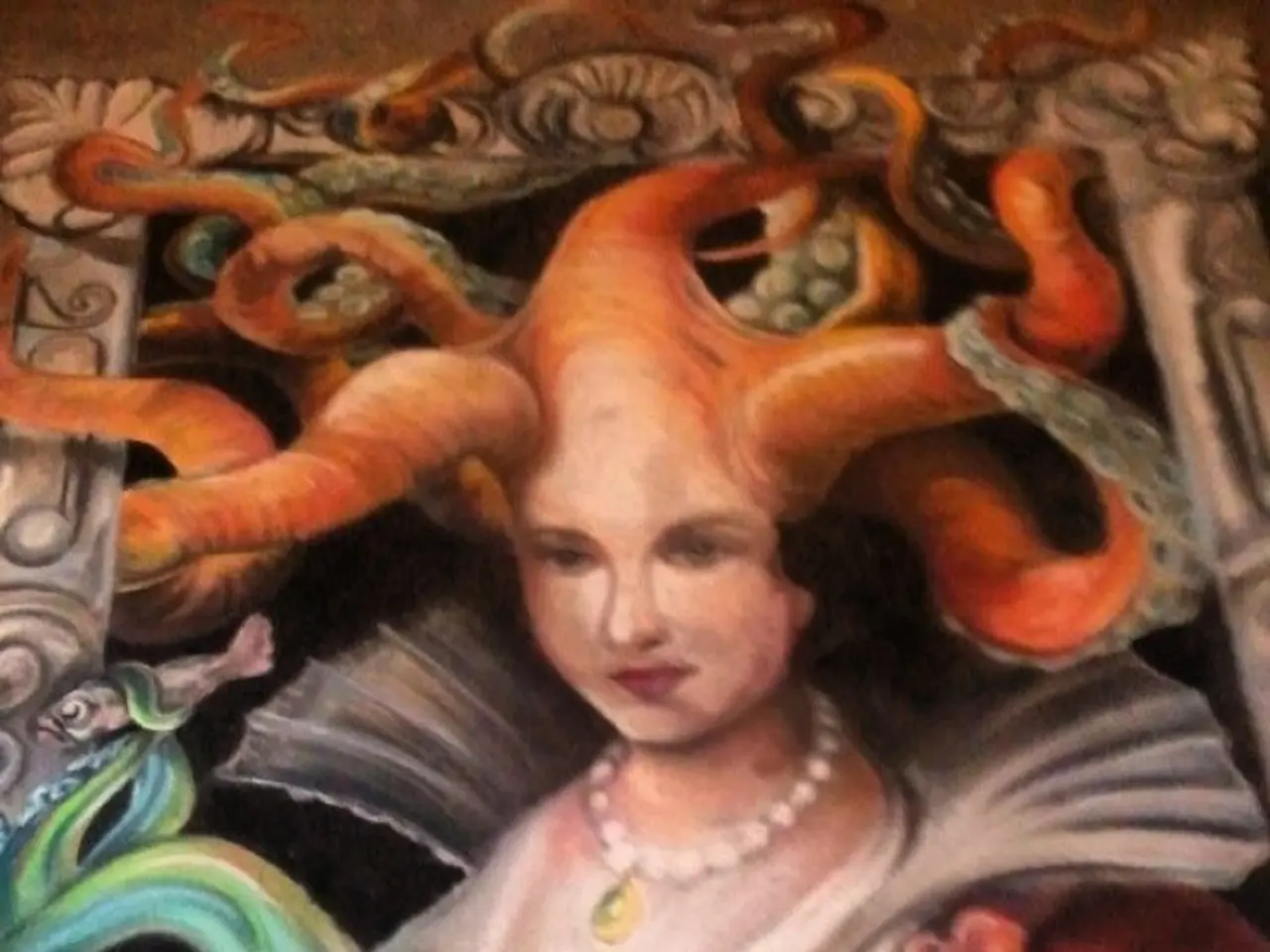Ancient Statues Showcase Puzzling Purses
In a recent video discussion, the possibility that bags depicted in ancient artwork could symbolise alien knowledge or advanced technology has been raised. However, it's essential to examine these claims within the context of archaeological and historical evidence.
Neo-Assyrian art, for instance, features frequent depictions of buckets and cones, often associated with rituals. These objects, believed to be of metal or basketry, were thought to hold water, pollen, or both. The cones were used for purification or fertilization rituals, while the buckets' purpose remains somewhat debated.
However, there are archaeological and historical explanations for such depictions that do not rely on ancient alien theories. Mesopotamian art frequently includes stylized representations connected to kingship, warfare, and religion rather than literal depictions of advanced technology. Objects that look like bags or buckets might represent tools, containers, or ceremonial implements.
Similarly, in ancient American cultures like the Olmec, Maya, Aztec, Moche, and Inka, art often depicts items related to social, religious, or political life. Bags, containers, or technological-looking objects could be artistic representations tied to ritual, status, or practical use, explored through archaeological and art historical research.
It's crucial to remember that ancient art frequently uses symbolic forms that do not correspond to modern technological categories but serve cultural narratives, religious beliefs, or social hierarchies. Interpretation must consider the cultural context and archaeological evidence rather than assuming anachronistic technological meanings.
To date, there is no archaeological consensus supporting the idea that these artworks represent advanced extraterrestrial technology. Instead, these objects and images are best understood through the lenses of ancient cultural practices, religious symbolism, and artistic conventions documented by archaeologists and historians.
In summary, ancient depictions of bags, buckets, or complex-looking objects in Mesopotamian and South American art are typically interpreted as symbolic or practical artifacts rooted in their respective cultural and religious contexts, supported by archaeological research and comparative art history. These findings offer concrete explanations beyond ancient alien theories.
One intriguing aspect of Neo-Assyrian art is the depiction of winged genies or demons holding buckets and cones. Yet, even these figures can be understood within the cultural context of the time, likely symbolising religious or mythological figures rather than extraterrestrial beings.
In conclusion, while speculation about ancient art and alien knowledge can make for captivating discussions, it's essential to approach these topics with a critical eye and a firm grasp on the evidence at hand. By doing so, we can deepen our understanding of the past and appreciate the rich cultural heritage that has shaped our world.
In the realms of ancient art, objects like bags and buckets in Neo-Assyrian and various American cultures (Olmec, Maya, Aztec, Moche, Inka) are more likely to be symbolic or practical artifacts rooted in their respective cultural and religious contexts, rather than representations of advanced alien technology or sci-fi-and-fantasy concepts.
Moreover,pop-culture discussions about ancient art and extraterrestrial knowledge need to be approached with caution, ensuring a thorough consideration of the archaeological and historical evidence, as the art often uses symbolic forms that don't correspond to modern technological categories but serve cultural narratives, religious beliefs, or social hierarchies.








